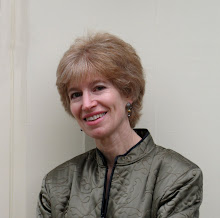When I stumbled across one of the two main characters in the novel I’m currently working on–Betsy Patterson Bonaparte–at an exhibit of Gilbert Stuart portraits some years back, I was intrigued. Here was a clearly fascinating historical character languishing in obscurity.
Yes, her beauty and her marriage to Napoleon’s youngest brother in 1803 had catapulted her to celebrity status in the 19th century–a collection of her letters published shortly after her death in 1879 referred to her as "one of the most famous women in America," a statement that was to me a sadly ironic comment on the fleeting nature of fame. Sure, she was the subject of numerous biographies and historical novels into the early 20th century, and during the same era there were two silent films and a Broadway play based on her life. But who really remembered her now?
Well, apparently, a lot of people–at least in the environs of her native Baltimore. The other day I was at the Maryland Historical Society’s library in that city, putting in a request for a box of her correspondence. A man standing next to me, who turned out to be a Historical Society staff member, asked me what I was researching. When I told him, he informed me that he himself had done a lot of research on Betsy, and that if there was anything I needed to know I should just ask him.
Okay, maybe that’s not so surprising–after all, the MdHS is where Betsy’s papers are housed, along with various personal items. They’re even having something of a Betsy Bonaparte festival in the fall of 2010. But a little later, I was giving a luncheon talk at a club in Baltimore called the Hamilton Club (among those present were several people from my Baltimore childhood and adolescence, including my high school English teacher, who must now be approaching 90). The talk was primarily about my first novel, A More Obedient Wife, but when I mentioned my work-in-progress, I was surprised to find that virtually everyone in the room seemed to know all about Betsy.
"I must be the only person who grew up in Baltimore who’d never heard of Betsy Patterson," I remarked. (Baltimoreans, true to their conservative nature, seem to prefer to call her by her maiden name). I’ve even discovered that a bakery in downtown Baltimore I liked to frequent when I was a child was called "Betsy Patterson’s." Somehow, I’d never noticed the name.
Well, all right–maybe everyone in Baltimore has heard of her. But what about the rest of the country? I now live in Washington, D.C., a city that has a lot of its own history to deal with; Betsy made a number of appearances here in the early 19th century (including a very high-profile one when she appeared at a party wearing an apparently see-through dress), but in relative terms she must still be pretty obscure. Or so I thought.
Yesterday I toured an old plantation house called Riversdale located in what is now a Washington suburb. It belonged to a remarkable woman named Rosalie Stier Calvert, who left behind a lot of letters (published in a book called Mistress of Riversdale). In several of these letters she mentions Betsy, and I’m about to write a scene that places Betsy on a visit there. So I thought it would be a good idea to take a look at the place.
It’s a beautiful house, lovingly restored, and I had an extremely knowledgeable and personable gentleman as my docent for what turned out to be a private tour (at only $3 per adult admission, this place is a bargain – I urge those living in or visiting the DC area to check it out). I kept hinting that I was primarily interested in what the house would have looked like in 1803 or 1804, without mentioning exactly why. But then I started to explain that I was working on a historical novel.
"Betsy!" muttered my docent, somewhat wearily.
How did he know? Does he routinely get visitors working on historical novels about Betsy Bonaparte? How many of us are out there? I was too taken aback to ask.
Of course, it’s possible that writing about someone who’s reasonably well known could actually be an advantage; maybe more people will be willing to buy and read a book about someone who’s not that obscure. But for me, part of the appeal of writing historical novels is precisely to rescue my (real) characters from obscurity, to make a "discovery." Clearly, Betsy has already been discovered.
But I can console myself with the thought that I have another character up my sleeve, one that only a very few people know about–even in Baltimore, which was also her hometown. Her name was Eliza Anderson Godefroy. And if you’re interested in knowing more about her (as well as in finding out some things about Betsy that may not be so well known), you’ll need to read my next book. Of course, first I’ll need to write it!
Monday, March 30, 2009
Subscribe to:
Post Comments (Atom)





I know this feeling, though it was late indeed before I ran across people who had heard of Gisi Fleischmann. I also encountered a couple of people who had actually KNOWN my subject, which can't happen to you. At least, not short of a seance.
ReplyDeleteI think I was briefly a neighbor of the Maryland Historical Society. The one on Park Avenue, right? Near the Walters and the Peabody and the original Washington Monument?
Yes, that's the one.
ReplyDelete